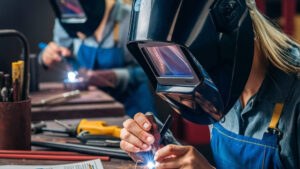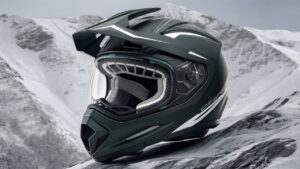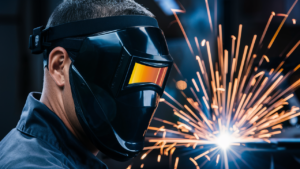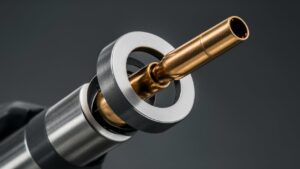Are you tired of shoveling snow off your gravel driveway every winter? You might be wondering if a snowblower can make the job easier.
But can you actually use a snowblower on gravel without causing damage or making a bigger mess? Knowing the right way to clear snow from your driveway can save you time, effort, and frustration. Keep reading to discover the best tips and tricks for using a snowblower safely on gravel and get your driveway winter-ready in no time.
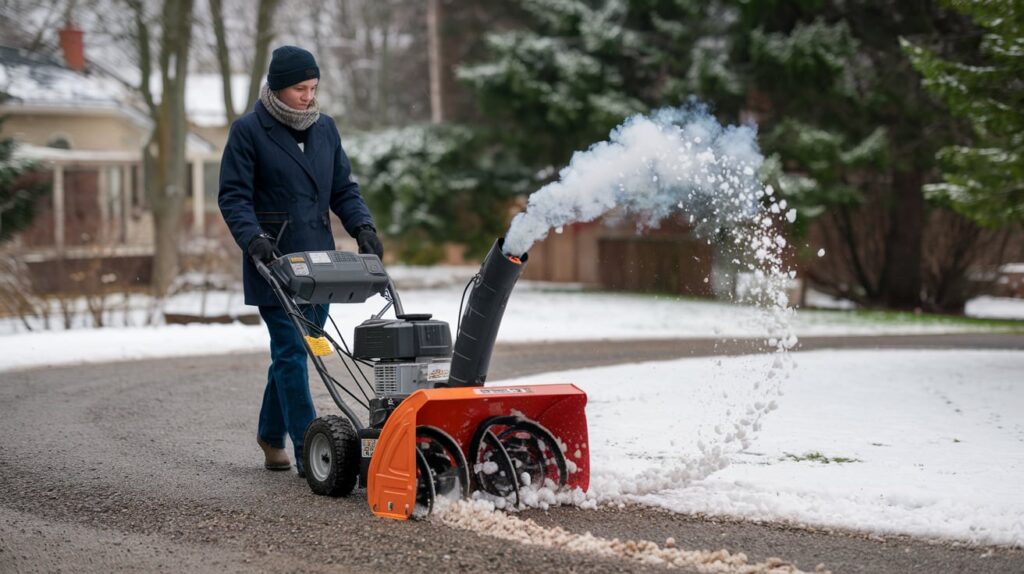
Snowblower Types For Gravel
Choosing the right snowblower for a gravel driveway needs care. Gravel surfaces require special features to avoid damage and ensure safety. Different snowblower types handle gravel in unique ways. Understanding these types helps in picking the best one for your driveway.
Single-stage Snowblowers
Single-stage snowblowers use a fast-spinning auger to scoop snow. They work well on smooth, flat surfaces. Using them on gravel can pull up stones. This may cause damage or throw gravel. Not the best choice for gravel driveways.
Two-stage Snowblowers
Two-stage snowblowers have an auger and an impeller. The auger breaks the snow, the impeller throws it away. They do not touch the ground directly. This reduces the risk of picking up gravel. Ideal for gravel driveways and rough surfaces.
Auger Vs. Impeller Models
Auger-only models spin to move snow but can dig into gravel. Impeller models use a fan to throw snow further. Two-stage snowblowers combine both for better control. Impeller helps clear snow without disturbing gravel. Choose models with adjustable skid shoes for extra protection.
Risks Of Using Snowblowers On Gravel
Using a snowblower on a gravel driveway brings several risks. Gravel surfaces are loose and uneven, which can cause problems during snow removal. Snowblowers are mainly designed for solid surfaces like asphalt or concrete. The loose gravel can shift and create challenges for both the machine and the user.
Gravel Displacement Issues
Snowblowers can easily pick up and throw gravel along with the snow. This causes gravel to scatter around the driveway and nearby areas. Loose stones can damage cars, windows, or even people nearby. The displaced gravel also leaves bare spots on the driveway. These spots can become holes or uneven patches, increasing the risk of tripping or vehicle damage.
Damage To Equipment
Gravel can damage the snowblower’s parts. The rotating blades can hit stones and break or bend. Gravel hitting the impeller can cause it to wear out faster. Rocks can get stuck inside the machine, causing jams or breakdowns. Repairing snowblowers after gravel damage can be costly and time-consuming.
Safety Concerns
Flying gravel creates a safety hazard. Small stones can hit people, pets, or property, causing injury or damage. The loose surface makes it harder to control the snowblower. This increases the chance of slipping or losing balance. Users must take extra caution to avoid accidents and injuries on gravel driveways.
Techniques To Protect Your Gravel Driveway
Protecting a gravel driveway while using a snowblower is important. Gravel can scatter or get damaged easily. Using the right techniques helps keep your driveway neat and intact. It also makes snow removal safer and more effective.
Small changes in how you use your snowblower make a big difference. These methods reduce gravel loss and prevent deep gouges. Follow these simple steps to protect your driveway better.
Adjusting Snowblower Height
Set your snowblower to the right height before clearing snow. Keep the auger slightly above the gravel surface. This prevents the blades from digging into the stones. Adjust the height so only snow, not gravel, is removed.
Check the height often during use. Gravel shifts and can change the surface level. Raising the snowblower too high might leave too much snow behind. Find the balance to clear snow without harming the gravel.
Using Skid Shoes
Skid shoes attach to the sides of your snowblower. They keep the machine from scraping the driveway. Skid shoes lift the snowblower just enough to avoid touching gravel. They also help keep the snowblower steady and level.
Choose skid shoes made for your model. Adjust the height of skid shoes as needed. This simple addition protects your gravel and improves snow removal.
Clearing Snow In Layers
Remove snow in small layers rather than all at once. Start with a shallow pass to clear the top snow. Then, make a second pass to remove deeper snow. This method reduces stress on the gravel surface.
Clearing in layers prevents the snowblower from digging too deep. It also helps avoid throwing gravel with the snow. Take your time and clear the snow gradually for the best results.
Alternative Snow Removal Methods
Snow removal on gravel driveways can be tricky. Snowblowers might not be the best choice because they can throw gravel along with snow. Many people use other methods that work well and keep the gravel safe. These alternatives help clear snow effectively without damaging your driveway.
Shoveling Tips
Shoveling is a simple and safe way to clear snow from gravel. Use a plastic shovel to avoid scraping the gravel. Shovel in small sections to make the job easier. Push the snow to the sides, not off the driveway. Take breaks to avoid overexertion. Wearing gloves keeps your hands warm and dry.
Using Snow Plows
Snow plows can clear large amounts of snow quickly. Choose a plow with an adjustable blade to avoid digging into gravel. Set the blade slightly above the surface. Move slowly and carefully to protect the driveway. Snow plows work well on long or wide driveways. They save time and reduce physical effort.
Hiring Professional Services
Professional snow removal services offer expert help. They use the right tools for gravel driveways. Professionals know how to avoid damaging your surface. Hiring them saves time and energy. Many companies offer regular service during winter. Check reviews and prices before choosing a service.
Maintenance Tips After Snowblowing
After clearing snow with a snowblower on a gravel driveway, some care is needed. Proper maintenance keeps your driveway safe and your equipment ready for next use. Small steps after snowblowing can prevent bigger problems later.
Inspecting Driveway Surface
Walk over your driveway to check for damage. Look for spots where gravel is missing or uneven. Find any holes or dips that may cause water to pool. Early inspection helps catch problems before they grow.
Fixing Gravel Displacement
Snowblowers can move gravel around, leaving bare patches. Gather loose gravel and spread it evenly. Use a rake to level the surface gently. Add fresh gravel if needed to fill low areas. This keeps the driveway smooth and safe to walk on.
Snowblower Care And Storage
Clear snow and ice off your snowblower after use. Check for stuck gravel or debris in the blades. Clean the machine to avoid rust and damage. Store it in a dry place to protect from weather. Proper care makes your snowblower last longer.
Frequently Asked Questions
Can You Use A Snowblower Safely On A Gravel Driveway?
Yes, you can use a snowblower on a gravel driveway with caution. Adjust the scraper blade higher to avoid picking up stones. Use a two-stage snowblower for better control and avoid damaging the equipment or driveway.
What Type Of Snowblower Is Best For Gravel Driveways?
A two-stage snowblower is best for gravel driveways. It has adjustable skid shoes that prevent the auger from scraping gravel. This type reduces stone pickup and protects both the driveway and the snowblower from damage.
How To Prevent Gravel From Flying When Snowblowing?
Raise the scraper blade and adjust skid shoes properly. Clear snow slowly and avoid deep scoops to minimize gravel displacement. Using a snowblower with an adjustable chute can also help control the direction of thrown snow and stones.
Can A Single-stage Snowblower Damage A Gravel Driveway?
Yes, single-stage snowblowers often scrape gravel along with snow. They have fixed blades close to the ground, which can pick up and throw stones. This can damage the driveway surface and your equipment over time.
Conclusion
Using a snowblower on a gravel driveway needs care and attention. Choose a snowblower designed for gravel to avoid damage. Adjust the height so the blades do not hit the stones. Clearing snow quickly keeps your driveway safe and easy to use.
Always check the machine before starting and follow safety tips. With the right approach, a snowblower can help manage snow on gravel driveways effectively. Keep these points in mind for a smooth, hassle-free winter experience.
